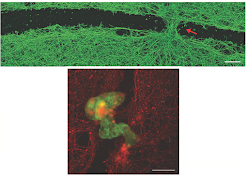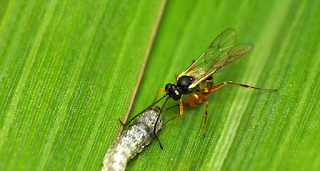New ultrathin materials can pull climate-warming CO2 from the air
Click on images to enlarge.
The three most influential gases towards climate change are carbon dioxide (CO2), methane (CH4), nitrous oxide (N2O), and fluorinated gases. Of these, CO2 is present in the largest amount by far. Its contributions to the greenhouse effect from burning fossil fuels and other combustion processes were noted as far back as 1896 by physical chemist and Nobel Prize winner Svante Arrhenius. Methane and N2O have a greater potential to trap heat, but there is so little of them in the atmosphere that CO2's overall effect is stronger. Planting trees can help remove it because they use CO2 and sunlight to make their own food source via photosynthesis. Reducing the amount made from industry will also help, but regulations are not always easy to come by. What if there was a filter or type of "flypaper" to take CO2 out as fast as it is being made? There just might be.
A special type of metallic material called a MAX phase was discovered naturally in the 1960s, but it took scientists until the 1990s to make them artificially. The name comes from how the three parts are labeled.
- M = elements like the metals vanadium and titanium
- A = elements like aluminum or silicon
- X = carbon alone or carbon plus nitrogen
In the right combination, these form sheets that are one molecule thick for each of the three components.
The thinnest material in the world, however, is only one layer (molecule) thick. It is called graphene (from the word graphite because it is pure carbon). It was discovered in 1962 but ignored until 2004, when it was "rediscovered" and investigated. Graphene was found to be an important material for semiconductors, electronics, electric batteries, and composites. But because its chemistry was so simple, it had little other use.
Because this single layer material has such different properties than the multi-layered MAX phases, scientists hoped to find something even more useful by removing the A element from a MAX phase in order to create a two-layered material they called a MXene (pronounced "max-een"). They did that with chemically etching away aluminum with hydrofluoric acid.
Scientists like Michael Naguib at Tulane University have shown that MXenes can be made with many combinations of elements (about 50 now exist), and their properties can also be changed fairly easily. One chemical treatment gives a MXene the ability to soak up CO2. Raw MXenes are a black powder which can dissolve in hydrogen peroxide. That can be used as a paint or later dried in sheets. The amount of surface area from the powder is amazing. Just one gram (1/400 ounce) of MXene has the same surface area as a football field! That gives it a lot of filtering capacity in a small painted patch.
If MXene is mixed with cellulose (plant cell wall fiber) then an elastomer (rubberizing agent) and dried, it can be used in sheets to filter gas molecules, such as CO2 or methane from natural gas or chimney flue gases. Professor Per Persson, a materials scientist from the Swedish Linköping University, stated that such filters could be used on the top of industrial chimneys to prevent the exhaust from delivering CO2 into the atmosphere.
One problem in the use of MXenes is the cost of the raw materials such as vanadium ($20/pound), titanium ($0.35/pound), and molybdenum ($5–$15/pound). Another is cleaning the CO2 off a MXene sheet after it has become saturated. Rinsing the sheets with hydrogen under high temperatures removes CO2, which can then be used as starting material for animal feed or methanol. The good news is that MXenes have many more uses:
- Desalination (trapping energy of the sun to purify water by evaporation)
- Waste water treatment (floating on water to evaporate it with 84% efficiency with sun energy)
- Battery technology and energy storage (higher charging rates than lithium-ion batteries; charging batteries faster)
- Nanogenerators (harvesting frictional energy from moving muscles to convert it into electric power)
- Conductive coatings (retaining conductivity even under heavy stretching and bending)
- Sensors and chemical noses (detecting ammonia and acetone, which are indicators of ulcers and diabetes, with lower traces than sensors now used in medical diagnostics)


























